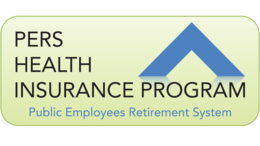|
APRIL 2022
Cost-of-living increases coming in August

Cost-of-living adjustments (COLAs) are coming mid-year. Your COLA will go into effect July 1 and will be included in your August 1 benefit payment.
COLAs are based on a regional Consumer Price Index (CPI) set by the U.S. Bureau of Labor Statistics for the prior year. The adjustments are limited to a maximum of 2% each year. PERS uses the West Region CPI, which was 4.52% for 2021.
If you retired before October 1, 2013, you will receive the maximum COLA of 2%.
If you earned service credit before and after October 1, 2013, your COLA will be calculated like this:
- 2% on service credit earned up to October 1, 2013, except for some OPSRP members*.
- 1.25% on service credit earned after that date. And if your annual benefit is more than $60,000, you will receive 0.15% COLA on benefits exceeding that amount.
For Tier One/Tier Two members, the difference between the 2% maximum and the 4.52% CPI will be banked in what is called a CPI carryover. Your CPI carryover is used to provide you with the maximum 2% COLA in years when CPI is less than 2%. The CPI carryover does not apply to OPSRP members.
*If you are an OPSRP member (hired after August 28, 2003) and your effective retirement date was on or after August 1, 2021, your COLA on service credit earned up to October 1, 2013, will not be 2%. It will be prorated based on the number of months for which you are due a benefit payment through July 1, 2022.
|
|
|
When will my benefit be paid in 2022?
Want to know when your monthly PERS pension benefits will be paid this year? Check out the PERS Pay Dates webpage for more information.
|
|
Know the rules for working after retirement

If you plan to work for a PERS-participating employer after retirement, check out the applicable rules on our Senate Bill (SB) 1049 webpage.
SB 1049 simplified some previous work-after-retirement rules as of January 1, 2020. Those changes will continue through December 31, 2024.
PERS is not involved in hiring decisions between retirees and employers. Whether a PERS-participating employer hires you, or places any limits on you as a PERS retiree, is between you and your employer.
|
|
|
New video explains how retirement system works
Ever wonder how everything comes together to make your pension system function?
The Public Employees Retirement System (PERS) relies on the partnership of the Oregon Legislature; Oregon State Treasury; and PERS, the agency. PERS-participating employers also play a key role. Learn more about the role each one plays in supporting your retirement system in our new video.
|
|
Take PERS’ 2022 online member survey
|
Share your feedback and help PERS, the agency, improve our member services by taking our annual member satisfaction survey.
Starting May 1, you can complete the survey online. PERS will send a reminder about the survey once it's available.
You will have until May 31 to complete the online-only survey.
|
|
 |
|
|
 PERS headquarters scheduled to reopen May 2
The PERS headquarters building in Tigard will reopen to the public on May 2. You can keep up to date about PERS’ operations via updates on our website and PERS emails.
|
|

If you are about to become Medicare-eligible and are seeking health-care options, the PERS Health Insurance Program (PHIP) can help.
Eligibility, enrollment, and plan information is available in a series of videos. You also can register for new enrollment webinars.
More information can be found on the PHIP website.
|
|
|
 |
|
PERS staff will not make unsolicited calls to you and never ask you for account login or financial information.
PERS will only contact you in response to a request you made, a form you submitted, or another action you took. If you are unsure whether someone contacting you is from PERS, call Member Services directly at 1-888-320-7377 to check.
Read more on our Protect Yourself from Fraud webpage.
|
|
|

By Tobias Read
Oregon State Treasurer
As state treasurer and a member of the Oregon Investment Council (OIC), I’m often asked questions that prompt me to begin my answer with “as a fiduciary” or “my fiduciary responsibilities require me to …”
What does that mean? What is a fiduciary? And how does that fiduciary responsibility inform investment decisions made by my team at Oregon State Treasury?
Under most state pension laws and the federal Employee Retirement Income Security Act (ERISA), a fiduciary is anyone who exercises discretionary authority or control over management or investment of retirement plan assets. That places me, my fellow OIC members, and many state Treasury employees squarely in the role of being fiduciaries.
It’s a role with profound responsibility. It requires us to act for the exclusive benefit of plan beneficiaries. That means that OIC members make investment decisions for the $100 billion PERS’ pension fund — also known as the Oregon Public Employees Retirement Fund (OPERF) — with undivided loyalty to PERS members and their retirement security.
Oregon law goes a step further. Statute requires fiduciaries to make our investment funds as “productive as possible,” subject to a prudent investor standard. This additional guidance means that while the council is directed to generate productive returns, we must do so with “reasonable care, skill, and caution” in our work.
Does this mean that I can’t factor in my morals and personal politics? Actually, yes, it does. Whether I like or don’t like a product or company CEO doesn’t matter — my opinion must be kept separate from the decisions I make as a fiduciary.
Risks from other issues — such as climate change, corporate governance, or labor relations — can be factored into decision making. That same prudent investor standard, and the long-term productivity of investments, requires us to account for risks when making decisions. But again, we are assessing the specific risks and returns of particular investments, not letting our broader sentiments on different issues drive decisions.
These decisions can involve countless data points, drivers, market analyses, and other factors. But at the heart of each decision is one constant: a commitment to ensuring that the public employees enrolled in PERS can count on OPERF fiduciaries like me to put their retirement security first.
|
|
|

As a PERS retiree, you may wonder how your pension system keeps track of its financial health.
Each year, PERS calculates its “funded status,” which compares projections of how much money the PERS system will have versus how much it is expected to pay out in retirement benefits within a certain timeframe.
To calculate the funded status, PERS follows a process called an “actuarial valuation.”
The latest official actuarial valuation* puts PERS’ funded status at 71% as of December 31, 2020. When funding is added in from employer sources known as "side accounts," that percentage increases to about 76%.
Every two years, the PERS Board examines how much money is coming into the system through employer sources. Based on the actuarial valuation and other data, the board decides whether to change employer contribution rates (C) to ensure that money coming into the system — along with projected earnings from investments (E) — will be enough to cover benefit payments (B).
On the earnings side, about 74% of benefit payments since 1970 have been paid for by long-term investments in the Oregon Public Employees Retirement Fund (OPERF).
*The next official actuarial valuation will be for the year ending December 31, 2021. It will be released in fall 2022.
|
|

If you are caring for a PERS benefit recipient, you will need to contact PERS — and possibly the PERS Health Insurance Program (PHIP) — if you need to manage the member’s account and/or make health insurance or financial decisions on their behalf. You may need to submit the following forms or information:
-
Authorization to Release Account Information — This form will allow you to access a PERS member’s account information.
-
Special Power of Attorney for PERS — This form will allow you to handle the affairs of a PERS member if they are unable to act on their own behalf.
-
Letters of conservatorship or guardianship — A “conservatorship or guardianship of estate” is a person or court-appointed entity (such as a nursing home) that is legally responsible for another person and their property.
-
Notification of a member’s death — A family member, beneficiary, or caregiver must immediately notify PERS (and PHIP, if applicable) of the death of a retired member to stop benefit payments and prevent overpayment. Beneficiaries may be responsible for repaying PERS for any overpayments that occur. Read more on PERS’ Get Help webpage.
|
|
|

Don’t be a stranger! Keep your information with PERS up to date, and mail or fax your forms to us in a timely manner. Find the forms you need online.
ADDRESS CHANGES: PERS Member Services cannot update addresses by phone or email for security reasons. Use Online Member Services or the Information Change Request form to make updates. To change your address with the PERS Health Insurance Program, you will need to use the PHIP Address Change Form.
DIRECT DEPOSIT: Forms received by the 15th of any month will typically be processed and effective for the following month’s benefit payment.
TAX WITHHOLDING: Updating your address or providing residency status certification does not automatically change your withholdings. Submit a W-4P form to update withholdings for your PERS pension and IAP payments. W-4P forms received by the third week of the month typically will be processed in time for the following month’s benefit payment. Note: A new W-4P form is scheduled for release in fall 2022. If you wish to change your withholdings after the release date, you will need to use the new form.
DIVORCE: Contact Member Services about divorce and PERS benefits.
ACCOUNT ACCESS: The Authorization to Release Account Information form allows you to authorize a third party to obtain information regarding your PERS account or benefits. The Special Power of Attorney for PERS form gives the person(s) you designate the power to make decisions for PERS-related matters on your behalf.
DEATH NOTICES: After a PERS member dies, a representative should contact Member Services as soon as possible. Failure to report a death in a timely manner may result in having to pay back retirement payments. PERS will require the date of death, city and state where the death occurred, a photocopy of the death certificate, and a spouse or personal representative contact information.
|
|
|

PERS offers retirees several self-service tools via the Online Member Services (OMS) portal.
You can use OMS to:
- Change your address.
- Update your residency status (important for Tier One members with tax remedy).
- View and print your payment history.
- View tax information.
- View upcoming benefit payments.
- Print benefit confirmation letters.
- Request a duplicate 1099-R.
To learn more about using OMS, visit the How Do I … webpage and click on the items listed there for more information.
If you need to set up an OMS account, check out our What Is OMS? webpage.
|
|
Stay informed with PERS email or text updates
You can get alerts on topics that include:
|
|
- Member news
- Tax remedy notifications
- Variable account Information
- PERS Health Insurance Program
- Legislation affecting members
|
- PERS Board meetings
- PERS administrative rulemaking
|
|
|
Mailing address:
PERS
PO Box 23700
Tigard, OR 97281-3700
Physical address:
11410 SW 68th Parkway Tigard, OR 97223
Phone: 888-320-7377
TTY: 503-603-7766
Phone lines open 8:30 a.m. to 5 p.m. Monday through Friday, except holidays.
|
|
We serve the people of Oregon by administering public employee benefit trusts to pay the right person the right benefit at the right time.
Chair: Sadhana Shenoy
Vice Chair: Lawrence Furnstahl
Members: Stephen Buckley, Jardon Jaramillo, and John Scanlan
PERS leadership
Director: Kevin Olineck
Deputy Director: Yvette Elledge-Rhodes
Chief Financial Officer: Richard Horsford
Chief Information Officer: Jordan Masanga
Chief Compliance, Audit, and Risk Officer: Jason Stanley Chief Operations Officer: Sam Paris
For more information contact:
PERS | PHIP | OSGP
|
|
|
Perspectives is published by the Oregon Public Employees Retirement System for the benefit of members and employers. It is emailed three times a year.
|
|
|
|
|